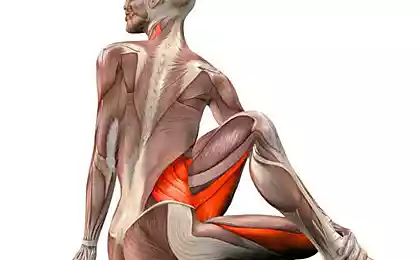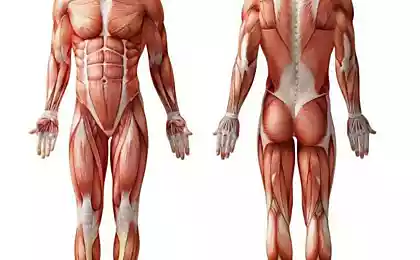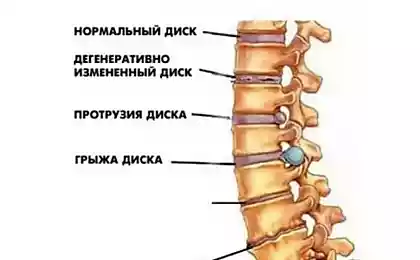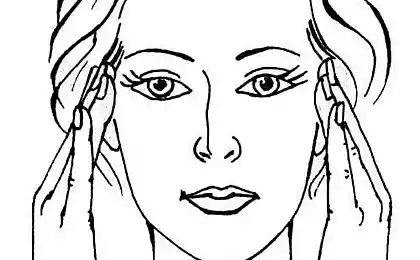552
Exercise "Crocodile" — corrects congenital and acquired disorders of the spine
Complex Crocodile contributes to the internal massage of the organs. Squeezing, stretching and rotating them, it helps to strengthen the muscles, improves the elasticity of ligaments and tendons, corrects congenital and acquired disorders of the spine, improves blood circulation, reduces tension between the vertebrae and intervertebral discs, promoting their rehabilitation, reduction of intervertebral hernia, has a beneficial effect on the nervous system, similar to the action of acupuncture.
The complex was developed by Australian osteopaths (chiropractors) after analysis of the movement of crocodiles, in which they found the spines in very good condition.

Medical series contains 9 exercises, designed for the spiral twists of the spine, performed lying on back, better on the floor.
The spiral twist is twisting when the foot is rotated in one direction, and the head at the same time in another. This movement involved the pelvis.
It is important to follow the breath.
In the initial position is exhale during the spiral turn is the breath.
Exercises to do at the expense of 8 each, i.e. 4 spiral turn on both sides.
In the extreme right and left positions of the body when the spiral turns it is necessary to linger for 4-5 seconds.
Exercises are performed in a strict sequence.
After each exercise you need to relax.
To do this, take a breath and simultaneously bend your knees (feet on the floor) and elbows, lying on the floor, hands hanging freely. In this position, you need to stay 10-20 seconds and then while exhaling, without muscular effort, slowly straighten the legs, hands down.
Exercises are performed smoothly, painlessly, without obvious effort, but with maximum amplitude. You have to feel the limit of their capabilities.
NOTE: Contraindications to the performance of this complex are:
Exercise 1.
Starting position lie on back, arms at sides, palms down, feet shoulder width apart. To make spiral turns in both directions at the expense of 8.

Exercise 2.
Same initial position. The heel of one foot placed on the toe of the other. Made of spiral turns.

Exercise 3.
Same initial position. The position of the feet varies.
Exercise 4.
Same initial position. One leg bent at the knee. Outer ankle of this leg is placed just above the knee of the other, which is straight. Performed spiral turns.
Exercise 5.
Same initial position. The position of the feet varies.

Exercise 6.
Same initial position. Both legs bend at the knee and hip joints, heels on the floor, the distance between them is equal to the length of the tibia. Performed spiral turns.

Exercise 7.
Same initial position. Both legs bent at the knee and hip joints. The outer ankle of one foot is placed just above the knee of the other, the heel which stands on the floor. Performed spiral turns.

Exercise 8.
Same initial position. The position of the feet varies.

Exercise 9.
Same initial position. Legs bent at the knee and hip joints at an angle of 90 degrees. Feet together, the heels do not touch floor. Performed spiral turns.published

Also interesting: the RIGHT exercises for scoliosis for 1, 2, 3 degrees
Low back pain: how to sit, stand, and lift heavy
Source: vk.com/wall-23903469?w=wall-23903469_5683
The complex was developed by Australian osteopaths (chiropractors) after analysis of the movement of crocodiles, in which they found the spines in very good condition.

Medical series contains 9 exercises, designed for the spiral twists of the spine, performed lying on back, better on the floor.
The spiral twist is twisting when the foot is rotated in one direction, and the head at the same time in another. This movement involved the pelvis.
It is important to follow the breath.
In the initial position is exhale during the spiral turn is the breath.
Exercises to do at the expense of 8 each, i.e. 4 spiral turn on both sides.
In the extreme right and left positions of the body when the spiral turns it is necessary to linger for 4-5 seconds.
Exercises are performed in a strict sequence.
After each exercise you need to relax.
To do this, take a breath and simultaneously bend your knees (feet on the floor) and elbows, lying on the floor, hands hanging freely. In this position, you need to stay 10-20 seconds and then while exhaling, without muscular effort, slowly straighten the legs, hands down.
Exercises are performed smoothly, painlessly, without obvious effort, but with maximum amplitude. You have to feel the limit of their capabilities.
NOTE: Contraindications to the performance of this complex are:
- bronchial asthma,
- pulmonary fibrosis,
- tuberculosis of the lungs.
Exercise 1.
Starting position lie on back, arms at sides, palms down, feet shoulder width apart. To make spiral turns in both directions at the expense of 8.

Exercise 2.
Same initial position. The heel of one foot placed on the toe of the other. Made of spiral turns.

Exercise 3.
Same initial position. The position of the feet varies.
Exercise 4.
Same initial position. One leg bent at the knee. Outer ankle of this leg is placed just above the knee of the other, which is straight. Performed spiral turns.
Exercise 5.
Same initial position. The position of the feet varies.

Exercise 6.
Same initial position. Both legs bend at the knee and hip joints, heels on the floor, the distance between them is equal to the length of the tibia. Performed spiral turns.

Exercise 7.
Same initial position. Both legs bent at the knee and hip joints. The outer ankle of one foot is placed just above the knee of the other, the heel which stands on the floor. Performed spiral turns.

Exercise 8.
Same initial position. The position of the feet varies.

Exercise 9.
Same initial position. Legs bent at the knee and hip joints at an angle of 90 degrees. Feet together, the heels do not touch floor. Performed spiral turns.published

Also interesting: the RIGHT exercises for scoliosis for 1, 2, 3 degrees
Low back pain: how to sit, stand, and lift heavy
Source: vk.com/wall-23903469?w=wall-23903469_5683
Soup with melamine: People the grass is not food, and utensils!
5 major theories about the nature of dreams and their purpose























